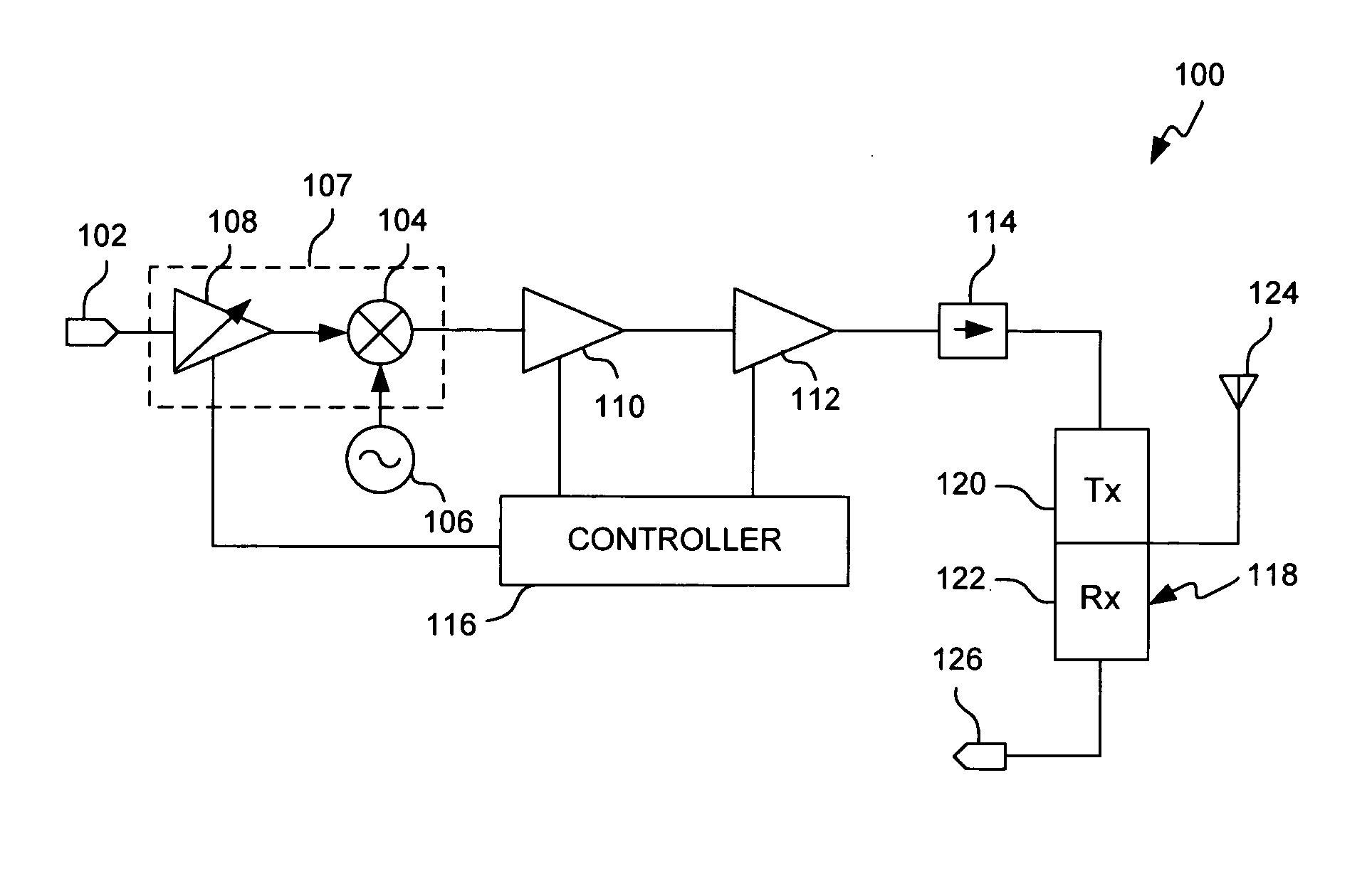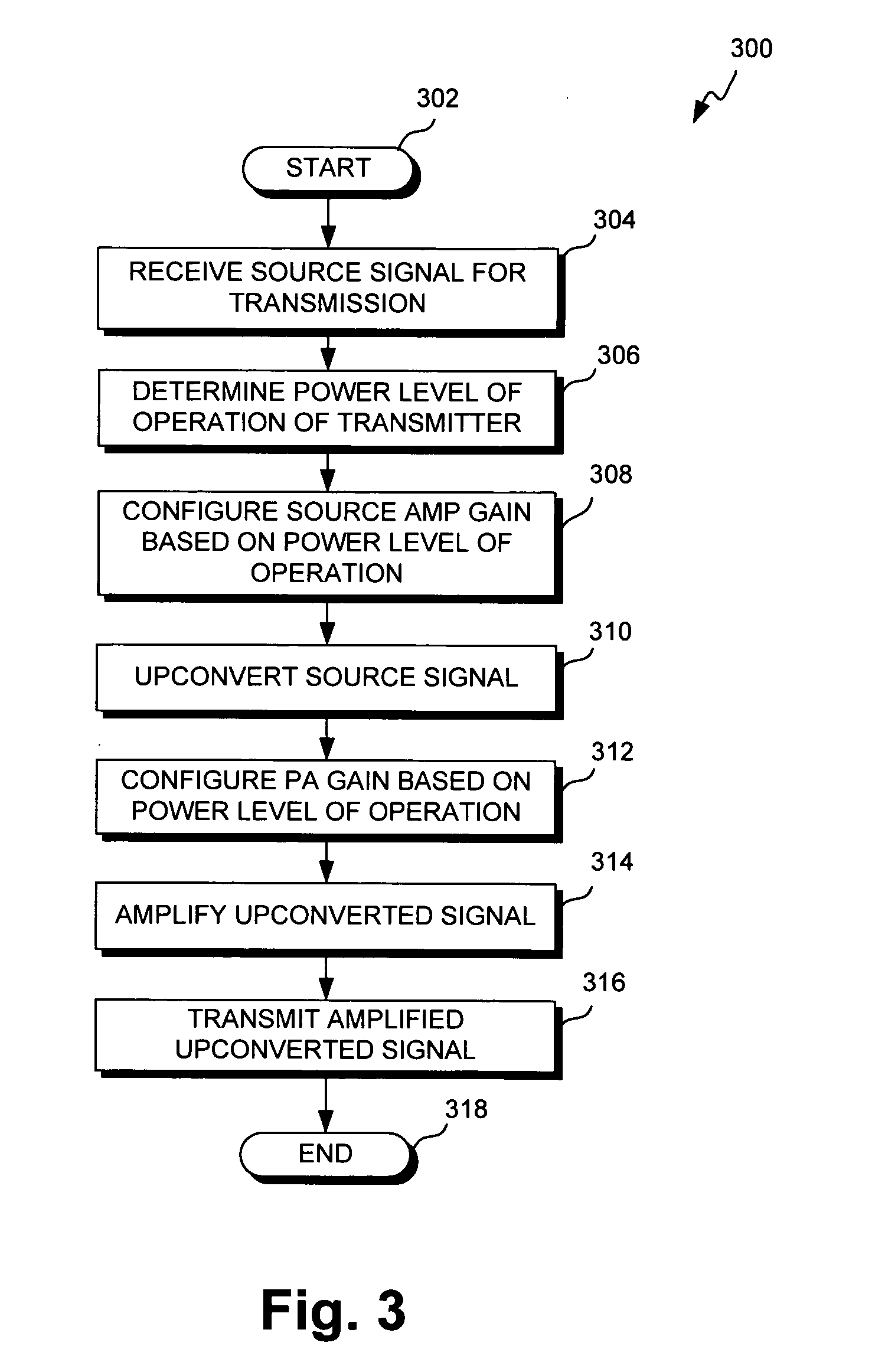Variable-loss transmitter and method of operation
a transmitter and variable-loss technology, applied in wireless communication, power management, sustainable buildings, etc., can solve the problems of reducing the signal-to-noise ratio, reducing the performance of the wireless communication device, and the problem is even more pronounced for mobile handsets, so as to reduce the source signal attenuation, reduce the signal attenuation, and increase the gain level
- Summary
- Abstract
- Description
- Claims
- Application Information
AI Technical Summary
Benefits of technology
Problems solved by technology
Method used
Image
Examples
Embodiment Construction
[0012] Referring first to FIG. 1, there is shown a simplified view of exemplary transceiver 100 according to one embodiment of the present invention. Transceiver 100 may, for example, be implemented in a wireless communication device, such as a mobile phone or a base station, capable of communicating RF signals in one or more frequency bands. As discussed in greater detail below, transceiver 100 achieves significantly improved SNR during low power operation.
[0013] As shown in FIG. 1, transceiver 100 comprises source amplifier 108, mixer 104, driver amplifier 110, power amplifier 112, isolator 114, duplexer 118 and antenna 124. Controller 116 controls the operation of transceiver 100 and, more particularly, the operation of source amplifier 108, driver amplifier 110 and / or power amplifier 112, as discussed below.
[0014] Although duplexer 118 includes transmits path 120 and receive path 122, the present discussion will be limited to communications associated with transmit path 120. A...
PUM
 Login to View More
Login to View More Abstract
Description
Claims
Application Information
 Login to View More
Login to View More - R&D
- Intellectual Property
- Life Sciences
- Materials
- Tech Scout
- Unparalleled Data Quality
- Higher Quality Content
- 60% Fewer Hallucinations
Browse by: Latest US Patents, China's latest patents, Technical Efficacy Thesaurus, Application Domain, Technology Topic, Popular Technical Reports.
© 2025 PatSnap. All rights reserved.Legal|Privacy policy|Modern Slavery Act Transparency Statement|Sitemap|About US| Contact US: help@patsnap.com



